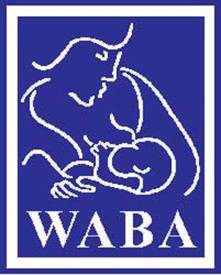Baby-friendly Hospital Initiative (BFHI)
The Baby-friendly Hospital Initiative (BFHI) was launched by UNICEF and WHO in 1991. It is a world-wide endeavour to improve maternity care practices that were that are associated with successful establishment of early and exclusive breastfeeding. The practices were codified as the Ten Steps, developed in the 1980s, which include Protection (Steps 6 and 9) from distructive practices, Promotion (Steps 1 and 3) of optimal feeding, and Support (Steps 2, 4, 5, 8, 9 and 10) for practices and conditions that are associated with optimal infant feeding.
Donor Human Milk Banking
According to the UN Convention on the Rights of the Child every child has the right to the highest available standard of health and every mother has the right to information on the benefits of human milk, both maternal milk and banked donor milk. The Global Strategy and the supplementary Acceptable Medical Reasons for the Use of breastmilk Substitutes 2009 promotes the use of breastmilk from a healthy wet nurse or a human milk bank as the best alternative to mother own milk.
Read more about Donor Human Milk banking
Birthing Practices & Breastfeeding
Pregnancy, labour, birth, and breastfeeding are normal and healthy processes. The mother and baby constitute an integral unit during pregnancy, birth, and infancy (referred to herein as the “MotherBaby”) and should be treated as such, as the care of one significantly impacts the care of the other.
Read more about Birthing Practices & Breastfeeding
Breastfeeding & Birth Spacing
Optimal birth spacing is at least 2 years, preferably 3-5 years. In populations that practice optimal breastfeeding, the impact of the breastfeeding on fertility naturally results in about 2 years of birth spacing on average. This means that many women who are breastfeeding will still experience less than the minimum recommended birth intervals.
Read more about Breastfeeding & Birth Spacing
Complementary Feeding
Complementary feeding is the term used for giving other foods and drinks in addition to breastfeeding after the completion of the 6 months exclusive breastfeeding period. The food and drink given should “complement” or make complete – the energy and nutrition provided by continued frequent breastfeeding up to two years and beyond. In other words, complementary foods are needed to fill the gap between the total nutritional needs of a child and the amounts provided by breastmilk.
Read more about Complementary Feeding
HIV & Breastfeeding
The HIV pandemic has had a serious effect on breastfeeding promotion and practice. When it was discovered that the virus could be passed from an HIV infected mother to her child through breastfeeding, many people became afraid, and efforts to promote exclusive breastfeeding and the Baby-Friendly Hospital Initiative slowed. People often assumed that all babies who were breastfed were likely to be infected – in fact only about 1 in 7 babies of HIV-positive mothers were infected this way, even when no precautions were taken to prevent transmission. Health services and agencies advised mothers to feed their babies artificially and in some situations they were given free formula, and there was concern about “spill-over” of artificial feeding to mothers who were HIV-negative.
Read more about HIV & Breastfeeding
Research
Training
WABA’s Education and Training working group is focusing its attention on meeting the need of health care providers to globally understand the basics (both why and how) of lactation and breastfeeding. Our concern is that the curriculum offered to all students of health care science include content which will prepare them both before they begin to serve the public (Pre-service) as well as after they begin to provide health care (In-service) to be able to be supportive of breastfeeding and help mothers succeed.
Read more about training and upcoming courses
Read more about BAP course in training page.




